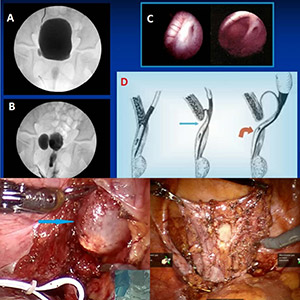Robot in Bladder Diverticulum; Robotic Diverticulectomy
What is bladder diverticulum?
Bladder diverticulum is a condition that can develop congenital (congenital) or later (acquired), fills and empties with urine in the bladder wall and gives the appearance of a separate urinary bladder. In its acquired form, obstruction at the bladder outlet, dysfunction of the bladder due to nerve damage and previous surgeries may be the cause.
How is bladder diverticulum treated?
The standard treatment for congenital bladder diverticulum is open removal of the diverticulum. In addition, laparoscopic and robotic methods can be counted. The results of these two methods are like the open method. Although laparoscopic diverticulectomy has been described in children, this method is technically challenging. Robotic diverticulectomy is a good option.
What are the advantages of robotic diverticulectomy?
Robotic diverticulectomy has many advantages over open or laparoscopic diverticulectomy. Three-dimensional imaging available in the robotic system; It provides better visualization of the diverticulum and surrounding structures and allows safe dissection of the vas deferens and ureter, which are anatomical structures near the diverticulum. The dexterity and mobility of robotic instruments also enables easier application of sutures inside the body during bladder closure. I have been safely performing the robotic diverticulectomy operation in children for years.
A five-year-old child had Hutch's diverticulum on the right side and vesicoureteral reflux on that side. I performed robotic diverticulectomy and reimplantation of that side ureter in our case (figure 1).

Figure 1: Cystographic (A, B), cystoscopic (C) and schematic (D) intraoperative image(bottom left image, blue arrow)of the patient with Hutch diverticulum and vesicoureteral reflux on the right side and excised material (bottom right image)

Is the doctor important in robotic bladder diverticulum surgery?
As in all urological surgeries, it is very important that the surgeon performing the surgery is experienced. After all, the one who controls the robot is a surgeon. For a successful and smoother operation, it is necessary to have an operation with a doctor who is specialized in robotic surgery.


